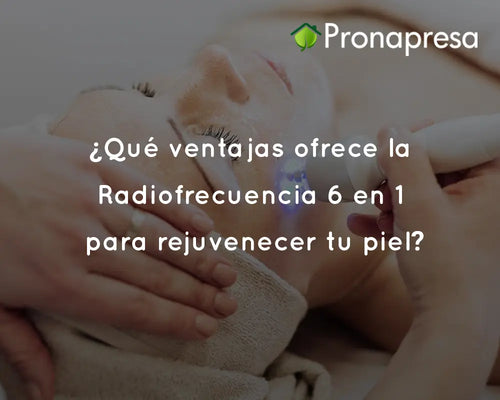Alopecia is hair loss and can affect both men and women. When it occurs in women, the pattern of hair loss is different. Although this problem is more common in men, nearly 30% of the female population worldwide suffers from it . In Spain, it is estimated that around 20% of women between the ages of 30 and 40 suffer from some degree of alopecia, even if mild.
Hair loss is natural, as it is part of the growth process, and hair loss is necessary for new hair to be replaced . However, the problem of alopecia arises when this regeneration does not occur at the proper rate, causing those affected to lose all or part of their hair. Hair growth is regulated by the hormonal system , and the appearance of alopecia is often related to irregularities in this system. Stressful situations, hormonal changes resulting from other pathologies, inherited genetic predispositions, or the simple passage of time are often some of the most common causes of alopecia.
Causes of alopecia in women
The causes of female alopecia can be very varied, but the most notable are the hormonal imbalances that occur after menopause, with a decrease in estrogen and an increase in the presence of androgens (male hormones).
In fact, hair thinning is a very common occurrence among women over 60 (or even earlier, in the premenopausal phase), sometimes accompanied by an increase in facial hair and hair on other areas of the body (hyperandrogenism).
It's also considered normal to experience unusual hair loss after childbirth, while the body regains its normal hormonal balance (six to twelve months); or when stopping contraceptive treatment with female hormones, since these estrogens enhance the anagen (growth) phase of hair.
Genetics also plays a role when it comes to female alopecia, as women with a family history of alopecia are more prone to it, whether male or female. However, there are other physiological factors that can cause excessive hair loss.
Among these, we must highlight the malfunctioning of the thyroid glands, whether it's hyperthyroidism or hypothyroidism, as they induce an increase or decrease in thyroxine, causing hair to become thinner and eventually fall out. Women with polycystic ovaries may also experience abnormal hair loss.
Finally, other environmental factors that can cause hair weakening and subsequent hair loss should also be mentioned:
- Stress.
- Pollution.
- A poor diet.
- Smoke.
- Poor hair hygiene.
- Frequent use of extensions.
- Continued aggression with certain hairdressing products.
Types of female alopecia
We can basically distinguish two types of female alopecia, easily differentiated by their way of manifesting.
On the one hand, we have the androgenic alopecia , which is the most common in women. In this case the hair becomes thinner and Volume is lost on the top of the head . Hair loss is a consequence of hormonal problems that weaken the hair follicles, which in turn produce less hair. This decrease in production causes the hair that falls out not to renew itself quickly, resulting in small bald patches, which if left untreated can lead to baldness.
Androgenic alopecia is usually closely related to three aspects: the seasonal replacement of hair, genetic inheritance or hormonal factors such as those that occur during the pregnancy, breastfeeding, or menopause. External factors have also been identified that can affect hair loss in both women and men. We are referring to stress and bad feeding .
The second type of female alopecia is known as alopecia areata and affects the scalp, but only in some localized areas . It is a autoimmune disease It can be caused by various factors, including genetics, and certain triggers, primarily stress, life changes, and infections, especially of the mouth and teeth. All that said, its exact cause is unknown.
Alopecia areata is characterized by the appearance of circular areas, large or small, in which all follicular units (those that produce hair) stop producing hair. There are varying degrees, from limited to small bald patches to areas that coalesce, resulting in larger areas of alopecia and, in the most severe cases, causing the loss of all hair and even all body hair.
There is another type of alopecia called Scarring alopecia , also with little-known causes but most likely autoimmune. It's a disease for which treatments, similar to those for areata, have little effect, and for which transplantation is also contraindicated.
How to treat alopecia
To treat alopecia, the first thing to do is seek the help of a dermatologist, even better if they specialize in trichology. Trichology is, broadly speaking, the science of the scalp and hair, both healthy and affected by a condition.
One of the methods to treat alopecia is Hair transplant . To perform this procedure, the expert will assess several factors, such as whether hair loss has stabilized or not, and whether the alopecia is diffuse or localized. In some cases, medical treatments can delay the transplant.
In the case of alopecia areata, the treatment is completely different. The most commonly used are corticosteroids, immunosuppressants, contact immunotherapy, or biological treatments, among others. Other treatments are platelet-rich plasma and mesotherapy .
Alopecia may not respond to treatment or may regress spontaneously and hair may grow back.
PRONAPRESA "Because prevention is better than cure" Visit our online store https://pronapresa.com and find the best nutritional supplements, spa equipment, and appliances for your home or business at the best prices. Check it out !






















































